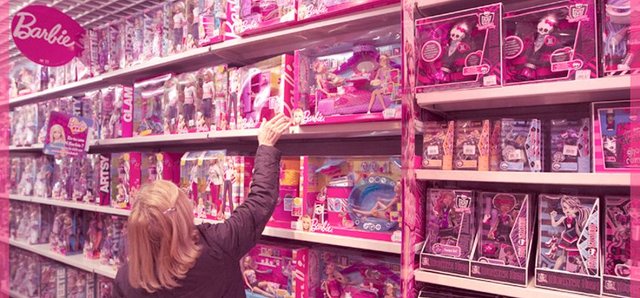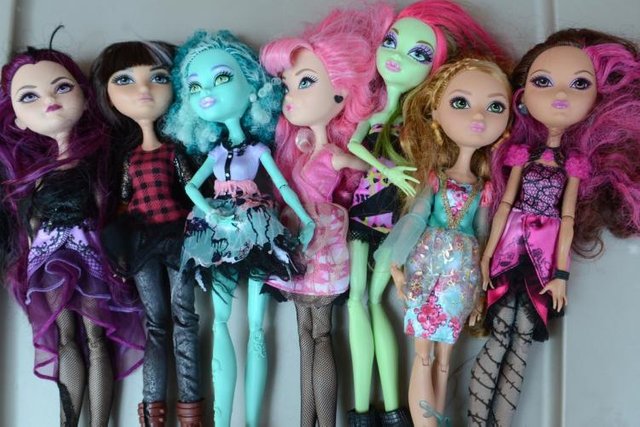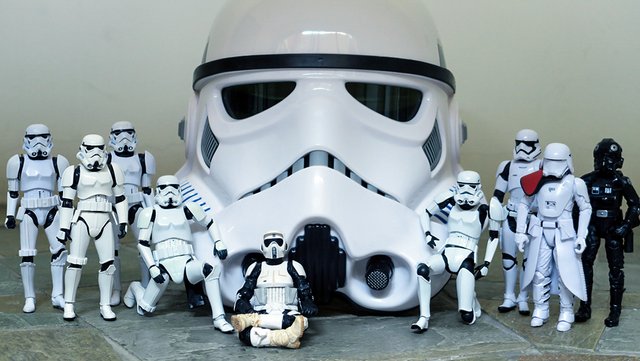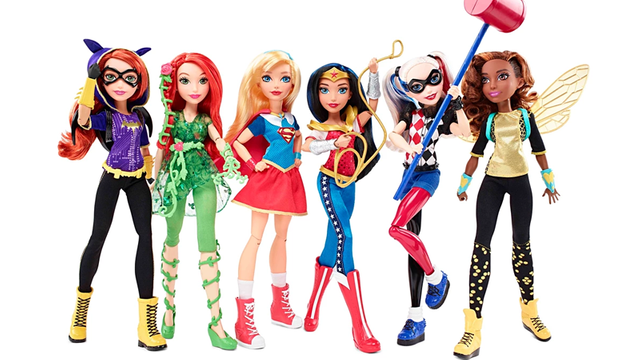Gender Stereotyping in Toys
When most people think of toys and gender stereotypes, the first thing they think of is the color pink – it, along with purples and pastels, marks off the girls' toys. Toys aimed at boys are red, black, orange, or green. When not separated by an aisle, color differentiation and who ends up featured on the box all help point out the intended audience for a specific toy.
However, there are other ways of perpetuating and reinforcing gender roles through play that are much more subtle than that.
Pink is Not the Problem
One of the repeated conversations had about gender stereotypes and toys is whether the constant use of a limited color palette is the issue. The same few shades of pink and purple can be found across toy aisles, delineating which toy is meant for which gender.
In terms of making it easy to segment the toy-buying population, especially among younger kids, color differentiation is a pretty good tactic. As a result, many people who want to make toys available for everyone tend to make the color pink itself the issue.
However, color preferences for marketing items are just one piece of the puzzle. The color pink is not inherently limiting or demeaning – it's only when it is used to fence girls in and everyone else out that we have an issue. After all, pink has only been assigned to girls in the most recent decades. Prior to that, pink was seen as a boy color because it is closer to red, and blue was for girls. Color assignation is culturally determined, and can be altered through cultural changes.
The "pink problem" won't be solved by demanding that the signifier be dropped entirely. A shift in the way toys are marketed and packaged will contribute to breaking down those stereotypes more quickly.
Making it so that toys are not divided by perceived gender role, including a full color palette for toys and packaging, and marketing campaigns that include kids of all genders playing on equal footing are stronger long-term strategies for reducing the negative impact of gender stereotyping in toys.
Research has shown that nearly 80% of kids will think a toy is for everyone if more than one gender is represented – if a toy is advertised with only one gender, that figure drops to 40%.
What's the Harm?
One question that immediately comes up in any discussion of how toys are marketed is why it matters. "If you don't like it, don't buy it!" It sounds like reasonable advice until you actually visit a toy aisle and realize that if you don't like it, you have nothing left to buy. Gender stereotyping in kids' toys took off during the late 1980s and early 1990s, and has become increasingly segmented since then.
The marketing has been so assiduous that many people simply believe that's how toys must have always been sold, and therefore the way things are now reflects something natural and biologically determined about how kids play.
Research, however, continuously demonstrates that advertising plays an enormous role in the beliefs children express about gender roles, and that showing children advertisements free of stereotypes expands their acceptance of non-stereotypical roles.
"If people didn't buy it, they wouldn't make it" is another common argument. Of course, companies make all kinds of things people never buy, but those products tend to disappear before they're memorable. The problem with this line of reasoning is that the gender segmentation of toys is so thorough that, again, there are incredibly limited options for people who object to it and want to find a less stereotypical way for their kids to play.
Buying "across the aisle," so to speak, often results in kids being bullied by other children for playing with the "wrong" toys.
Gender stereotyping in toys has an extraordinary impact on how kids develop and interact with the world. Boys, for example, tend to receive a harsh and negative reaction when they play with toys that are coded feminine. While girls have slightly more leeway to play with masculine-coded toys, there is still immense pressure for them to focus on feminine toys instead.
This early stereotyping reinforces beliefs about masculinity and femininity that can lead boys to dislike and belittle femininity (and girls along with it), in accordance with what is often referred to as toxic masculinity. Girls as young as 5 have reported feeling dissatisfied with their bodies after being shown images of toys like Barbie dolls, reflecting the start of a lifelong battle with society's perception of beauty.
Toys reinforce beliefs about the appropriate behaviors and roles for people based on gender, and children as young as 3 have been shown to already be aware of and affected by those stereotypes, according to an article in Developmental Science. Between the ages of 3 and 7, children's acceptance of gender stereotypes is the most rigid it will be throughout their lives. Toys can promote that rigidity by providing avenues to express and apply those stereotypes, and punish and ostracize children who step outside their boundaries.
Often, toys contain implicit messages about the person who should be playing with them, which can have lifelong repercussions. Toys aimed at girls typically focus on the home – beauty, housework, cooking, and childcare. Toys aimed at boys typically focus on everything else – exploration, building, invention, and even warfare. Toys . . . encourage children to play a variety of roles they may take as adults, with more overtly specified rules for playing out these roles. Child's play creates habits and beliefs about the role of the self and others that are often repeated throughout a person's life - and when those roles are limited, it affects what children see for themselves in their futures.
Even further, toys marketed to boys often focus more on developing strong spatial skills and ingenuity. One study found that masculine-coded toys tended to be those that encouraged scientific and cognitive development, while feminine-coded toys did not. Toys aimed at girls are more often focused on nurturing, being beautiful, and developing domestic skills. Both sets of skills are important – but dividing them by gender has the effect of limiting girls and reifying beliefs about what opportunities are available and what skills can be developed.
The gender stereotypes baked into many toys encourage children to accept specific gender roles from a young age, and at a time in their lives when they are most susceptible to stereotypical beliefs. The patterns of behavior developed through play shape a person's future in subtle but important ways, and gender stereotypes contribute to ongoing sexist beliefs.
Passivity vs. Activity
Even the ways in which toys are described in advertising can reinforce these gender roles. The language used to market toys relies on subtle cues about expected behavior and activity that falls along strictly gendered lines. The way toys – specifically action figures – are built can also serve this function. While not as often discussed as the color of the packaging, these verbal and physical cues also have an impact.
Toy advertisements contain visual elements that encourage action for boys and passivity for girls. Commercials for toys aimed at boys feature more aggression, more physical action, and louder noise, while commercials for toys aimed at girls tend to be smoother in composition, involve more talking, and are generally quieter. Boys in ads tend to outnumber girls, and girls are often portrayed as passive observers of the toys, while boys are shown actively playing with them.
One study found that 71% of active roles in toy advertisements went to boys or men, while only 29% were for girls or women – a 2:1 ratio. Girls were depicted as passive or inactive twice as many times as boys were in ads. These differences showcase gender-based expectations for behavior and activity.
Studies have shown that the amount of time a child spends watching television also corresponds to the development of more traditional beliefs about gender and gender roles.
The way toys are built also tells children how those toys are meant to be used. The verbal difference between "dolls" and "action figures" already genders the type of expected play and heightens the difference that often exists in the way the toys can be used. Most dolls aimed at girls have very few points of articulation – places that allow the doll to be posed.
Barbie, for example, can often only be bent back and forth at the neck, shoulder, hip, and occasionally the knee or ankle, allowing for a change of clothes but not much else in terms of range of motion. Action figures, on the other hand, are often valued precisely because they are almost infinitely poseable.
Most action figures have points of articulation at the neck, shoulder, elbow, wrist, waist, hip, knee, and ankle, most of which can be manipulated in multiple directions – these are toys that are meant to move.
This simple physical difference in how toys are built, what they are called, and who they are advertised to emphasizes the gender stereotypes applied to toys.
Girls are told that their toys are for beauty – for being looked at, and thus so are they. Boys are told that their toys are for activity – for doing things and building things, and thus so are they. These messages start in childhood, and last a lifetime.
Mattel's line of DC Super Hero Girls features toys with the most articulations I have ever seen on a toy aimed at girls in my years of collecting, representing a change that gives me some hope. While some toy stores have made changes to how toys are displayed in an attempt to reduce the impact of stereotypes, gender stereotypes are still omnipresent in most ads and stores.
It is up to the adults to further challenge these imitations, and ensure that all forms of play are open to children regardless of their gender.
Sources:
Judith E. Owen Blakemore - Characteristics of Boys' and Girls' Toys
Davita Silfen Glasberg - Games Children Play: An Exercise Illustrating Agents of Socialization
Jennifer Pike - The Effects of Commercials on Children’s Perceptions of Gender Appropriate Toy Use
Gail Snyder - Children’s Television Commercials and Gender-Stereotyped Messages









Great article. This is something I have done a lot of thinking about, but not as much research on, so I really appreciate you pulling all this together.
I often hear people say the "well, what's the harm?" line, and I think you hit it right on the head. I was aghast when my oldest daughter started verbalizing her beliefs about what colors and toys are for girls, as young as 4 years old!! My wife and I had been intentional about not giving her that and teaching that all colors and toys are for anyone. But, she picked it up from the culture still.
This is a really good point. I remember seeing a parent chastise their son for wanting to play with a baby doll. In a moment of boldness and sarcastic rage, I turned to them and said "yeah, God forbid he grew up and turned into a dad. Am I right?" They weren't too happy, but I think they got the message.
This is an important piece. Thank you.
Nice post... amaziiing...
great informative post. It's amazing how such perceived small segments of societal "norms" have a lasting effect on the psyche of kids to adults. You wouldn't think of the scope of learned behaviors that contribute to toxic masculinity and forced boxed ways of thinking. This is important to change so that we can have adults in society who don't have to unlearn so many problematic behaviors.
Two Genders?
I am getting downvoted for saying there are only 2 genders. Click here to see who is attacking me. I am being flagged for making this meme about Caren who was at GameStop on Friday, the 28th of December, 2018. The viral videos went all over the Internet. This post was downvoted for describing biology. Did you see that show on YouTube, the Radical Cram School (RCS) and what they do to little kids?